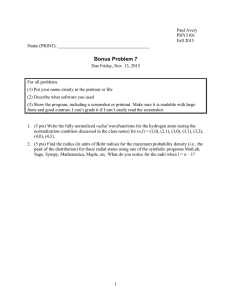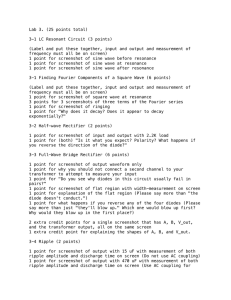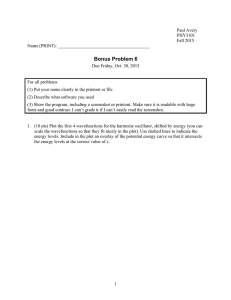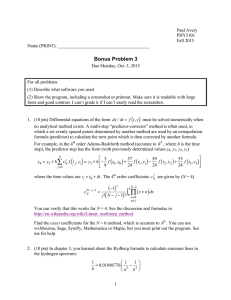Lab 4. (25 points total) 4-1 Open-Loop Test Circuit (2 points)
advertisement
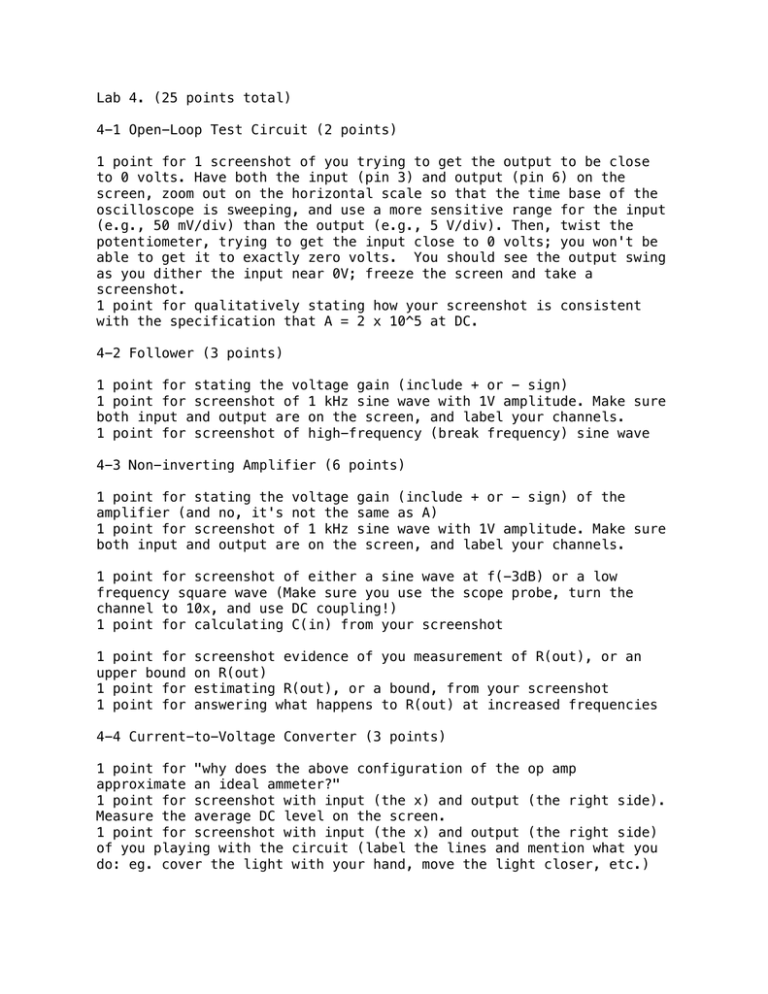
Lab 4. (25 points total) 4-1 Open-Loop Test Circuit (2 points) 1 point for 1 screenshot of you trying to get the output to be close to 0 volts. Have both the input (pin 3) and output (pin 6) on the screen, zoom out on the horizontal scale so that the time base of the oscilloscope is sweeping, and use a more sensitive range for the input (e.g., 50 mV/div) than the output (e.g., 5 V/div). Then, twist the potentiometer, trying to get the input close to 0 volts; you won't be able to get it to exactly zero volts. You should see the output swing as you dither the input near 0V; freeze the screen and take a screenshot. 1 point for qualitatively stating how your screenshot is consistent with the specification that A = 2 x 10^5 at DC. 4-2 Follower (3 points) 1 point for stating the voltage gain (include + or - sign) 1 point for screenshot of 1 kHz sine wave with 1V amplitude. Make sure both input and output are on the screen, and label your channels. 1 point for screenshot of high-frequency (break frequency) sine wave 4-3 Non-inverting Amplifier (6 points) 1 point for stating the voltage gain (include + or - sign) of the amplifier (and no, it's not the same as A) 1 point for screenshot of 1 kHz sine wave with 1V amplitude. Make sure both input and output are on the screen, and label your channels. 1 point for screenshot of either a sine wave at f(-3dB) or a low frequency square wave (Make sure you use the scope probe, turn the channel to 10x, and use DC coupling!) 1 point for calculating C(in) from your screenshot 1 point for upper bound 1 point for 1 point for screenshot evidence of you measurement of R(out), or an on R(out) estimating R(out), or a bound, from your screenshot answering what happens to R(out) at increased frequencies 4-4 Current-to-Voltage Converter (3 points) 1 point for "why does the above configuration of the op amp approximate an ideal ammeter?" 1 point for screenshot with input (the x) and output (the right side). Measure the average DC level on the screen. 1 point for screenshot with input (the x) and output (the right side) of you playing with the circuit (label the lines and mention what you do: eg. cover the light with your hand, move the light closer, etc.) 4-5 Inverting Amplifier (8 points) 1 point for stating the voltage gain (include + or - sign) of the amplifier 1 point for screenshot of 1 kHz sine wave with 1V amplitude. Make sure both input and output are on the screen, and label your channels. 1 point for screenshot with maximum output swing measurement on screen (The output swing is the difference between your maximum output amplitude and the voltage of your power supply.) 1 point for screenshot of low frequency sine wave input and ouput 1 point for screenshot of break frequency sine wave input and ouput 1 point for if the break frequency is consistent with the manufacturer's stated gain-bandwidth (look up this number on the datasheet!) 1 point for screenshot evidence of you measuring R(in) 1 point for calculating R(in) from your screenshot 4-6 Summing Amplifier (2 points) 1 point for screenshot of 10 kHz signal with positive DC offset. Make sure both input and output are on the screen, and label your channels. 1 point for screenshot of 10 kHz signal with negative DC offset. Make sure both input and output are on the screen, and label your channels.

